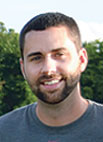
In the mid-1940s, Paul Bridwell spent a summer traveling the country in a railroad box car with 13 Milking Shorthorns cows. He had just gotten out of high school and was the herdsman for the state’s Milking Shorthorn herd.
He milked Milking Shorthorns with his father for many years, but Paul switched his farming interests from dairy to beef cattle nearly 50 years ago. He, however, stuck with the distinctive Shorthorns.
Today, between 60 and 100 head of Shorthorns can be found at Paul’s rural Brighton, Mo., farm.
“Milking Shorthorns weren’t really an economical milk cow,” 89-year-old Paul said. “They are a real docile animal, but Milking Shorthorns just couldn’t compete in the dairy industry… I switched to beef Shorthorns in about 1968. They are easy to work with and they look good. They are also pretty quick to grow, are good mothers and have tremendous milk production.”
Paul, with the help of his grandson Joe Bridwell, runs his cattle on a 263-acre farm near the Polk/Greene County line.
Paul’s focus for his herd is to produce a high-quality animal that will perform well throughout its lifetime.
“Just because it shows good doesn’t mean it will do good when you get it home,” he said. “There’s so many of these club calves out here that will do real well in the show, but that’s it. I want mine to do well on the farm and make money… That’s why I really look at those EPDs.”
Being focused on performance has allowed Paul to concentrate on seven specific cow families, and there are cows at the farm that are examples of his dedication to selecting the right genetics.
“We’ve got three cows that are 15 years old,” he said. “Their udders, except for one of them, looks like they are 3-or 4-year-old cows. We are big on having strong udders in our cows. We want to improve performance with each generation. We keep most of our heifers each year because if you have a really good cow, you don’t want to sell her heifer.
In an effort to have some of the best genetics possible, Paul and Joe will purchase seedstock from other breeders, including Waukaru Shorthorns in Indiana.
“They have the most documented herd in the country,” Paul said. “They have about 300 cows and they have the patent on easy calving. Their goal is to raise performance sires.”
The lifelong cattleman feels Shorthorn breeders have gotten “the short end of the stick” for the last several years because of the push for black cattle, but Paul said there might be a little more to the story.
“Nearly every black bull carries red genes,” he said.
For the commercial cattle producer, Shorthorn genetics can offer traits that packers and producers like, Paul said.
“A Shorthorn bull can do wonders,” he said. “We don’t have any white bulls, but if you put a white Shorthorn bull in with some black cattle, they make a roan looking calf, and the feedlots love them. If you are going keep replacement heifers, that Shorthorn cross female will out milk anything you’ve got.”
While he seeks a market for the Shorthorn-cross cattle, it’s not something Paul wants to delve into.
“Shorthorns have been good to me my whole life,” he said. “They paid for this farm. I just love what I do and you have to love cattle to keep doing it as long as I have; it’s all I’ve ever known.”
Paul and Joe typically do not breed heifers until they are at least 18 months old. Paul feels giving a heifer more time to grow before having her first calf helps reduce problems in the future and improves her longevity. Calves are born in the spring and fall at Bridwell Shorthorns.
“I don’t like cold weather calves,” Paul said, adding that he believes calves born during warmer periods are better performing calves because they do not have to fight the cold early in their lives.
The Bridwells have utilized AI in the past, but have not followed the practice for several years. Paul and Joe hope to begin a new program in the future, and they have been exploring the possibility of embryo transplanting. Meanwhile, they are pleased with their current breeding program.
“We’ve got better bulls than we can find in the catalog,” Paul said.
At this time, Paul and Joe don’t plan on expanding or decreasing their herd size, but there are plans for the future. Paul has turned a large portion of the labor at the farm to Joe. It’s a task Joe doesn’t take lightly.
“I know I’m going to inherit more than just the farm and cows,” he said, adding that Paul raised him from the time he was 14 years old. “I’m going to inherit a reputation with breeders in the four-state area. I want to keep that reputation growing. He has taught me everything I know about cattle and has probably forgotten more than I will ever know. I want this farm to become a Century Farm.”
“He’ll make a hand,” Paul said proudly.







